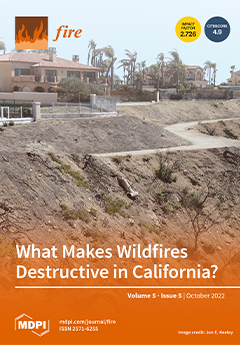An in-depth understanding of the low-temperature reactivity of hydrocarbon fuels is of practical relevance to developing advanced low-temperature combustion techniques. The present study aims to study the low-temperature chemistry of several large
n-alkanes with different carbon chain lengths in counterflow cool diffusion
[...] Read more.
An in-depth understanding of the low-temperature reactivity of hydrocarbon fuels is of practical relevance to developing advanced low-temperature combustion techniques. The present study aims to study the low-temperature chemistry of several large
n-alkanes with different carbon chain lengths in counterflow cool diffusion flames by kinetic analysis. The large
n-alkanes that were chosen are
n-heptane (NC
7H
16),
n-decane (NC
10H
22) and
n-dodecane (NC
12H
26), which are important components of practical fuels. Firstly, the thermochemical structure of a typical cool diffusion flame is understood through its comparison with that of a hot diffusion flame. The boundary conditions, including the ozone concentration, fuel concentration and flow velocity—where cool flames can be established—are identified with a detailed chemical mechanism that evaluates the low-temperature reactivity of the investigated
n-alkanes. The results show that the
n-alkane with a longer carbon chain length is more reactive than the smaller one, thereby indicating the order of NC
12H
26 > NC
10H
22 > NC
7H
16. This trend is qualitatively similar to the findings from non-flame reactors. The reaction pathway and sensitivity analysis are performed to understand the effects of carbon chain length on the low-temperature reactivity. The contribution of an
n-alkane with a longer carbon chain to the dehydrogenation reaction, oxidation reaction and isomerization reaction is greater than that of a smaller
n-alkane, and abundant O and OH radicals are generated to promote the fuel low-temperature oxidation process, thereby resulting in an enhanced low-temperature reactivity. The effects of ozone addition on the low-temperature reactivity of
n-alkanes are also highlighted. It is found that the addition of ozone could provide a large number of active O radicals, which dehydrogenate with the fuels to generate OH radicals and then promote fuel low-temperature oxidation. The present results are expected to enrich the understanding of the low-temperature characteristics of large
n-alkanes.
Full article





